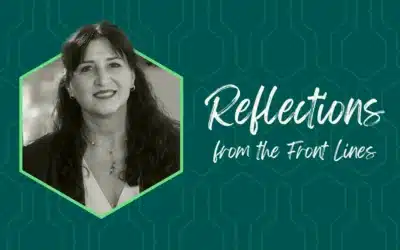During a Phoenix Spring with passive-aggressive temperatures, rain and wind, and a metaphorically similar State legislative session. We live in a storm of sentiment and opinion, a maelstrom of politics.
The number of unsheltered in the immediate area of the Key Campus (formerly known as Human Services Campus) was 55 this morning. The number in our team’s expanded count increased to 474; this area is a wider radius in which the team has also been regularly counting. One month ago the expanded count area was 373, and two months ago it was 296.
Unsheltered people are moving from location to location.
Homelessness continues to increase.
This week there are 7,786 adults on the By Name List for housing, housing that comes with some level of services. (Reminder: this is different from public housing authority wait lists.)
Four spaces on the Key Campus continue to shelter 900+ individuals every night.
For the calendar year 2023, according to Maricopa Association of Governments, there were 19 new people experiencing homelessness for every 10 people finding housing. (Homelessness Trends Report)
If we continue with a weather metaphor, the above might be compared to a “rising tide,” or a “scattered thunderstorm” that leaves pockets of flooded area. If we wanted to understand what caused the weather, we would look to the skies and ask meteorologists about weather patterns. We would look for the emergency responders, the temporary storm shelters, and crisis services. And we would not blame these responders, shelters, and services for creating the storm.
Alas right now there are elected officials blaming responders, shelter providers, and service organizations that serve people experiencing homelessness for creating homelessness, not serving people the right away, and wasting funds. They over-simplify cause and effect, conflate and jumble national data with their perception, mix interventions and outcomes, and cry foul over how Federal and State funding is invested into a crisis response system. They proclaim a service model that is not evidence based, nor a best practice for ending homelessness.
And they point to the unhoused and say that locally substance use is the primary reason for homelessness.
They want to identify the root cause of homelessness by looking at the current symptomology of those who are unhoused.
From data collected at Key Campus fiscal year to date July 1, 2023 through February 29, 2024 we heard the following from 8,355 unique individuals served (all self-report as a current condition):
2,223 mental health disorder (27%)
465 alcohol use disorder (6%)
1,007 drug use disorder (12%)
668 both alcohol and drug use disorder (8%)
1,676 chronic health conditions (20%)
83 HIV/AIDS (1%)
559 developmental disability (7%)
1,283 physical disability (15%)
These are “conditions reported.” They are barriers to housing stability, not necessarily the reason or driving factor of the person’s homelessness. Are these conditions likely contributors to homelessness? The probability is likely high.
However, this local data does not support a conclusion that any singular factor or condition is THE primary cause of homelessness. The data most certainly does not support the notion that “treatment first” is going to resolve homelessness for a majority of people. And if we want to address the drug/opioid epidemic in Arizona, it is definitely not by targeting the unhoused and the employees that deliver programs every day to support individuals and to provide connection to individualized solutions.
There are more threads to unravel. More weather patterns to dissect. Thanks to the folks who raised these issues, as I now have a list of topics to address in future Reflections. Coming up we will dive in to: services that address the conditions above, funding that flows in to these services, data reporting and tracking, the differences in housing interventions, and how we really identify root causes of homelessness.
In the meantime, take a listen to this blast from the past by Candlebox, “He Calls Home.”
If you have never been faced with a decision of which bill to pay first, or where to sleep safely at night. If you have never had strained familial relations. If you have never felt so alone in the world that home was the sidewalk you were standing on. Then consider your good fortune, count your blessings, add up your gratitude. Listen first to seek to understand.


